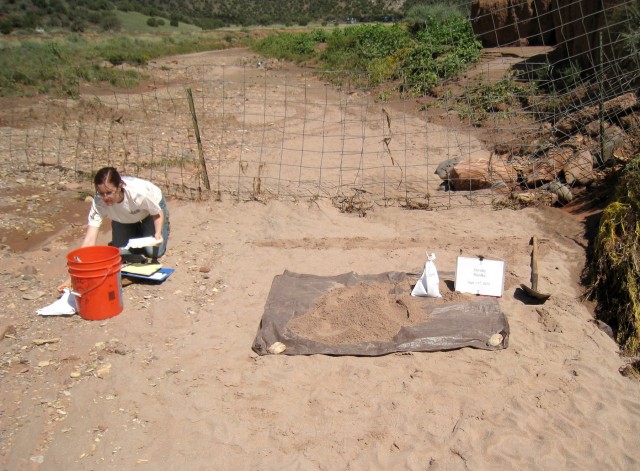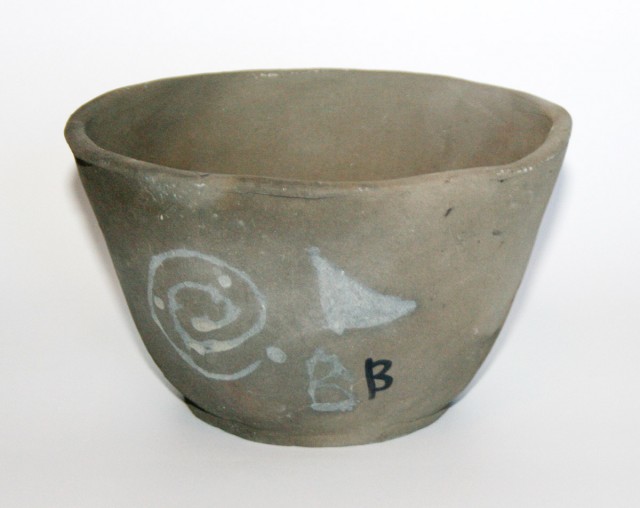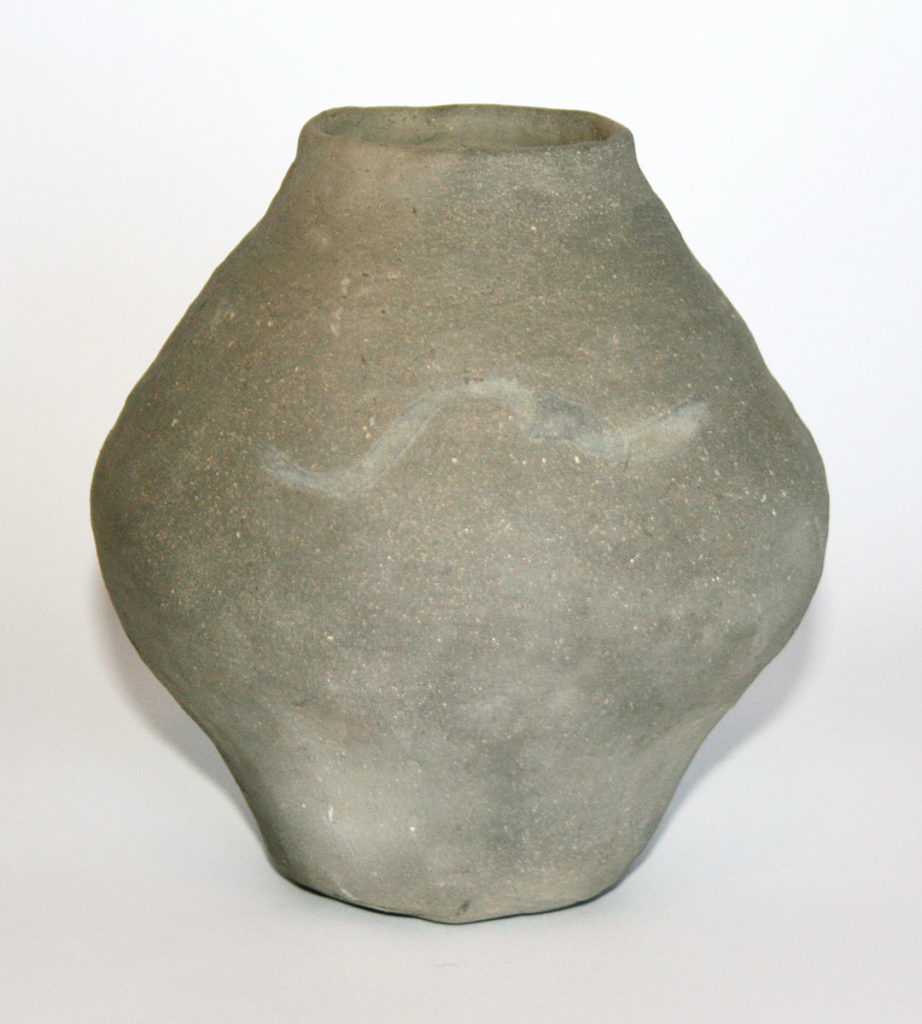- Home
- >
- Preservation Archaeology Blog
- >
- Decisions in Clay
As International Archaeology Day (October 15, 2016) approaches, we’re celebrating by sharing posts about what we’re working on now—the daily work of archaeology. Today, we have a guest post from Mary, our colleague at Desert Archaeology, Inc.

Mary Ownby, Research Petrographer, Desert Archaeology, Inc.
(October 14, 2016)—As a newbie poster to Archaeology Southwest’s Preservation Archaeology blog, I should probably first introduce myself. I am the research petrographer at Desert Archaeology, Inc. This means I study pottery with a microscope by looking at pieces glued to a slide and thinned down. I use this method to examine how and where pots were made, and it is really a lot of fun! I’ve been doing this work for almost 10 years, 6 of those years at Desert. I’ve contributed to several Archaeology Southwest projects, including the one along the Upper Gila River.
Having such a microscopic view of pottery can tend to make you think about the decisions the potters made. Why pick this material? Why add so much sand? Why fire the pieces to this temperature? In order to understand better the choices made by ancient potters, I decided to play with clay. (Also, I’m a big nerd, so hunting around for clay and molding it really appealed.)
I was motivated in these endeavors by an invitation to speak about my work at the Southwest Kiln Conference in 2015. This is a wonderful collection of people who like to re-create ancient pottery and do loads of experiments; we were kindred souls. They meet each year and always do several firings, so I figured I would need to bring my own hand-built pot—a tall order for someone with little artistic skill! But I had some experience wheel-throwing pottery, thanks to my mother, who is an expert potter.

While working on a project in New Mexico near my home, I noticed some lovely clay along the side of the road. I chose this as my raw material due to its availability. With my mom’s help, I built two small coiled vessels. I found that adding a bit of water helped join the coils along with smoothing and pulling with my fingers. I put one in a trench kiln firing dug into the ground and covered with wood, so there was little oxygen, and the pot came out gray due to the reduction in iron that was in the clay. The second was in a pit kiln where oxygen was available, so it came out a pretty pink, as some of the iron had become oxidized. I was hooked!
For this year’s Southwest Kiln Conference, which took place in mid-September, I used a clay we gathered at last year’s conference. It was found as a layer in a bank on the side of the road and needed to be soaked in water to be used. The clay is very fine and lovely to work. Interestingly, for this clay, adding water to join the coils was disastrous! This clay likes to be used just on its own, so I used a pebble to smooth the coils. This also helped prevent cracks. This was a great experiment in showing the differences between clays and how the methods for building a vessel may change depending on the characteristics of the clay. My little pot was fired in a trench kiln and came out a nice gray.
As someone who uses scientific methods to study ancient pottery, these experiences and the discussions with fellow experimenters have been invaluable. They have opened my eyes to the uniqueness of clay, difficulties in forming vessels, and care with which firings must take place. I now have a much broader view on ceramic production and the potters behind it, as well as some wonderful new friends!
2 thoughts on “Decisions in Clay”
Comments are closed.
Explore the News
-
Join Today
Keep up with the latest discoveries in southwestern archaeology. Join today, and receive Archaeology Southwest Magazine, among other member benefits.


Artistry informs words, deeds, and thoughts as much as it does objects, and yours all qualify. Fine description of important work done with skill and heart!
Also, what a great way to conceptualize and link traditional knowledge (TK) to object production. How did people know what to do? Well, they learned from others and passed on the best and prettiest and most useful of that knowledge…